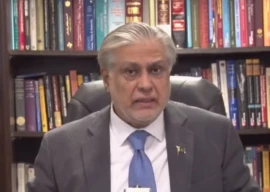
The inflation rate eased to 23.2% in September on the back of a surprising discovery made by the Pakistan Bureau of Statistics (PBS) in which they claimed that the cost of electricity was 31% less last month than a year ago.
The latest inflation bulletin from the PBS stated that electric-bill charges dropped by 65.3% in September, compared to a month ago while these were lowered by 30.5%, compared to a year ago.
Moreover, September was the month when people received electric-bills that were doubled, as the government had increased the base tariff by Rs3.50 per unit under a deal with the International Monetary Fund (IMF), in addition to passing on the impact of the fuel price adjustment.
When contacted, the PBS chief statistician replied that the reported reduction in electricity charges was due to prime minister’s decision to withdraw fuel adjustment charges from consumers using up to 300 units of electricity.
However, the PM had only deferred the charge, not withdrawn it, as was being widely reported.
The PBS data showed that the rate of inflation remained at 23.2% in September over a year ago. In August, the highest level of inflation in 47 years was recorded at 27.3%.
Index-wise increase, the transport group inflation rate was recorded at over 64.5% on the back of petrol prices seeing an increase of 87%.
The data further showed that the monthly inflation rate also decreased by 1.2% in September taking enough pressure off the State Bank of Pakistan (SBP) to further increase interest rates, currently at 15%.
However, the core inflation, calculated after excluding the volatile energy and food prices, increased to 14.4% last month in urban areas and 17.6% in rural areas. This suggests that despite an overall slowdown in the inflation rate, the underlying pressures could persist in keeping the rate high.
Furthermore, the government has committed to IMF to keep the real interest rates positive, but the central bank has recently said that it will not risk a recession to chase a positive real interest rate.
During the July-September period of this fiscal year, the average inflation rate remained at 25.1%, according to PBS.
Yet, PBS reported that the CPI-based inflation rate slowed down to 21.2% in urban areas and eased to over 26% in villages and towns.
But the pace of food inflation surged to 30.8% in cities and to 32.7% in villages and towns last month, show the PBS data. The prices of both perishable and non-perishable food products increased significantly.
The food group prices surged over 31.7% in September, compared to the same month a year ago. Similarly, the price of perishable food items increased over 50%.
There was marked reduction in the pace of non-food inflation that slowed to 15.2% in cities from the 24.7% rate from a month ago. Similarly, in rural areas the non-food inflation rate slipped to 20.1% from 27.5%.
A major anomaly in the inflation measure was the claim of reduction in electricity tariffs.
The federal government had set the inflation target at 11.5% for this fiscal year but the SBP distanced itself from this official target saying that inflation may remain in the ranges of 18% to 20% during the current fiscal year. After the floods, the initial estimates suggested that average inflation rate may rise to the range of 24% to 26%.
The price of tomatoes increased by 127% last month, compared to a year ago, followed by an 80% increase in the rate of pulses and 72% for various types of ghee and cooking oil, according to PBS.
In addition to this, the data showed that alcoholic beverages and the tobacco group prices soared nearly 32.7% while clothing and footwear soared to 17.7%. Housing, water, electricity and gas fuels group prices, however, were shown to surge only 3.4%, which seemed like another discrepancy in the PBS data.
Further, the cost of hoteling groups is reported to have increased by 29%, followed by a 39% increase in cost of cleaning and laundering, last month. Stationary also became expensive by another 53% last month compared to a year ago. Construction material prices also surged to over 29%.
Published in The Express Tribune, October 2nd, 2022.
Like Business on Facebook, follow @TribuneBiz on Twitter to stay informed and join in the conversation.


1722586547-0/Untitled-design-(73)1722586547-0-165x106.webp)


1732326457-0/prime-(1)1732326457-0-165x106.webp)

1719053250-0/BeFunky-collage-(5)1719053250-0-270x192.webp)










COMMENTS
Comments are moderated and generally will be posted if they are on-topic and not abusive.
For more information, please see our Comments FAQ